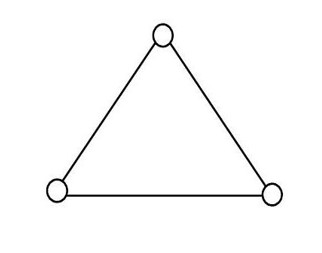Class 11th
Get insights from 8k questions on Class 11th, answered by students, alumni, and experts. You may also ask and answer any question you like about Class 11th
Follow Ask QuestionQuestions
Discussions
Active Users
Followers
New answer posted
2 months agoContributor-Level 10
The internal energy of one mole of an ideal gas is given by U = (f/2)RT, where f is the number of degrees of freedom.
For a non-linear triatomic molecule (assumed to be a rigid rotator), there are:
3 translational degrees of freedom.
3 rotational degrees of freedom.
Vibrational modes are generally not considered at temperature T unless specified.
Total degrees of freedom f = 3 + 3 = 6.
U = (6/2)RT = 3RT.
New answer posted
2 months agoContributor-Level 9
The name of the element is derived from its atomic number using the IUPAC nomenclature for elements with Z > 100.
un = 1
nil = 0
enn = 9
So, unnilennium corresponds to the atomic number 109.
New question posted
2 months agoNew answer posted
2 months agoContributor-Level 10
The least count (LC) of the screw gauge is the pitch divided by the number of divisions on the circular scale.
LC = Pitch / N = 0.1 cm / 50 = 0.002 cm.
A measurement taken with this instrument must be a multiple of its least count. We check the options:
(A) 2.121 / 0.002 = 1060.5 (Not a multiple)
(B) 2.123 / 0.002 = 1061.5 (Not a multiple)
(C) 2.124 / 0.002 = 1062 (Is a multiple)
(D) 2.125 / 0.002 = 1062.5 (Not a multiple)
The correctly recorded measurement is 2.124 cm.
New answer posted
2 months agoContributor-Level 10
∴ σ² ≤ 1/4 (M - m)²
Where M and m are upper and lower bounds of values of any random variable.
∴ σ² < 1/4 (10 - 0)
⇒ 0 < < 5
∴ σ ≠ 6
New answer posted
2 months agoContributor-Level 10
Let P = (3t², 6t); N = (3t²,0)
M = (3t², 3t)
Equation of MQ: y = 3t
∴ Q = (3/4 t², 3t)
Equation of NQ
y = ( 3t / (3/4 t² - 3t²) ) (x - 3t²)
y - intercept of NQ = 4t = 4/3 ⇒ t = 1/3
∴ MQ = 9/4 t² = 1/4
PN = 6t = 2
New answer posted
2 months agoContributor-Level 10
A: D ≥ 0
⇒ (m + 1)² - 4 (m + 4) ≥ 0
⇒ m² + 2m + 1 - 4m - 16 ≥ 0
⇒ m² - 2m - 15 ≥ 0
⇒ (m - 5) (m + 3) ≥ 0
⇒ m ∈ (-∞, -3] U [5, ∞)
∴ A = (-∞, -3] U [5, ∞)
B = [-3,5)
A − B = (-∞, −3) U [5, ∞)
A ∩ B = {-3}
B - A = (-3,5)
A U B = R
New answer posted
2 months agoContributor-Level 10
Ellipse: x²/4 + y²/3 = 1
eccentricity = √ (1 - 3/4) = 1/2
∴ foci = (±1,0)
For hyperbola, given 2a = √2 ⇒ a = 1/√2
∴ hyperbola will be x²/ (1/2) - y²/b² = 1
eccentricity = √ (1 + 2b²)
∴ foci = (±√ ( (1+2b²)/2 ), 0)
∴ Ellipse and hyperbola have same foci
√ ( (1+2b²)/2 ) = 1
⇒ b² = 1/2
∴ Equation of hyperbola: x²/ (1/2) - y²/ (1/2) = 1
⇒ x² - y² = 1/2
Clearly, (√3/2, 1/2) does not lie on it.
New answer posted
2 months agoContributor-Level 9
Burning of fossil fuels (which contain sulphur and nitrogenous matter) such as coal and oil in power stations and furnaces produce sulphur dioxide and nitrogen oxides which causes acid rain.
Taking an Exam? Selecting a College?
Get authentic answers from experts, students and alumni that you won't find anywhere else
Sign Up on ShikshaOn Shiksha, get access to
- 65k Colleges
- 1.2k Exams
- 679k Reviews
- 1800k Answers

